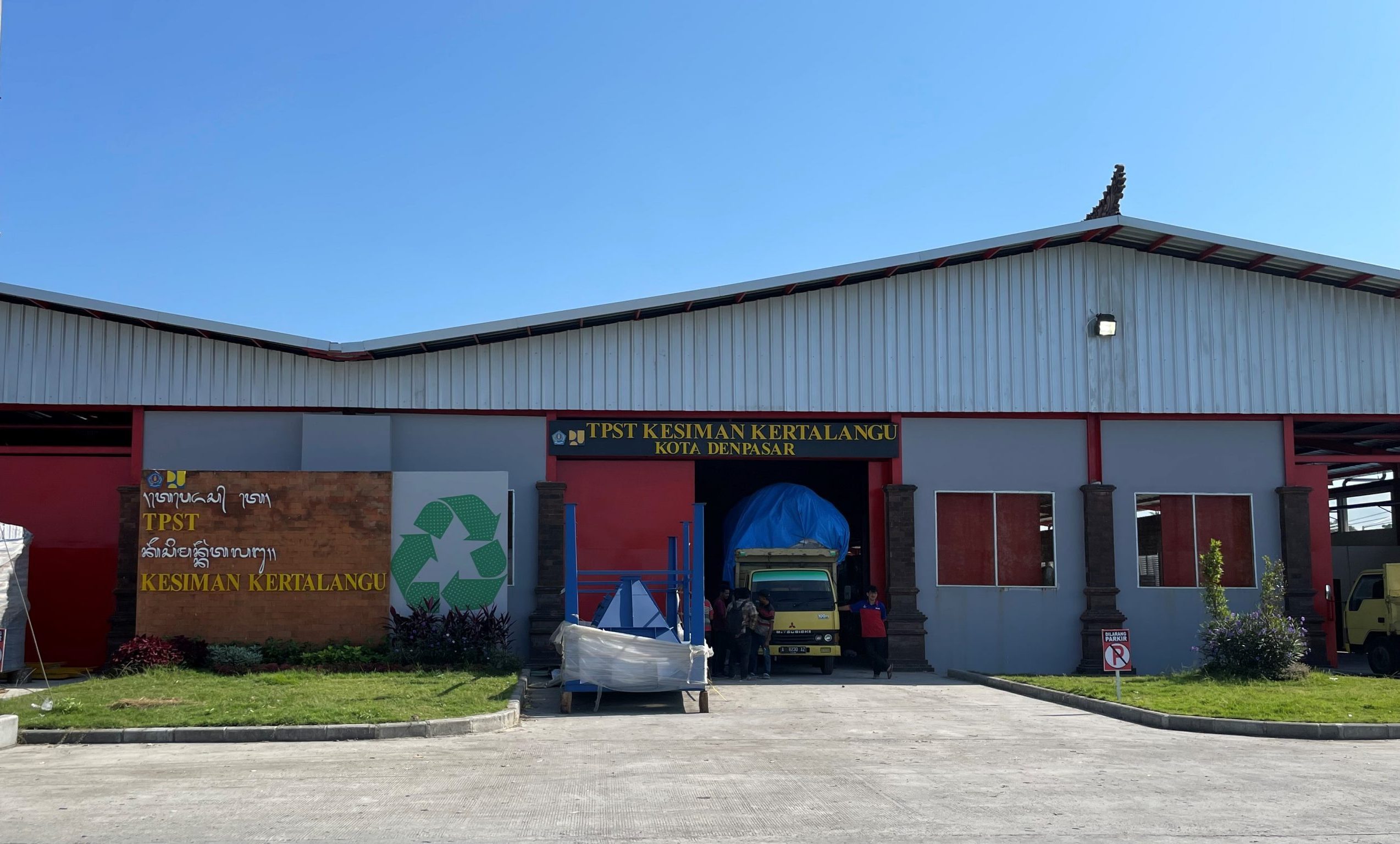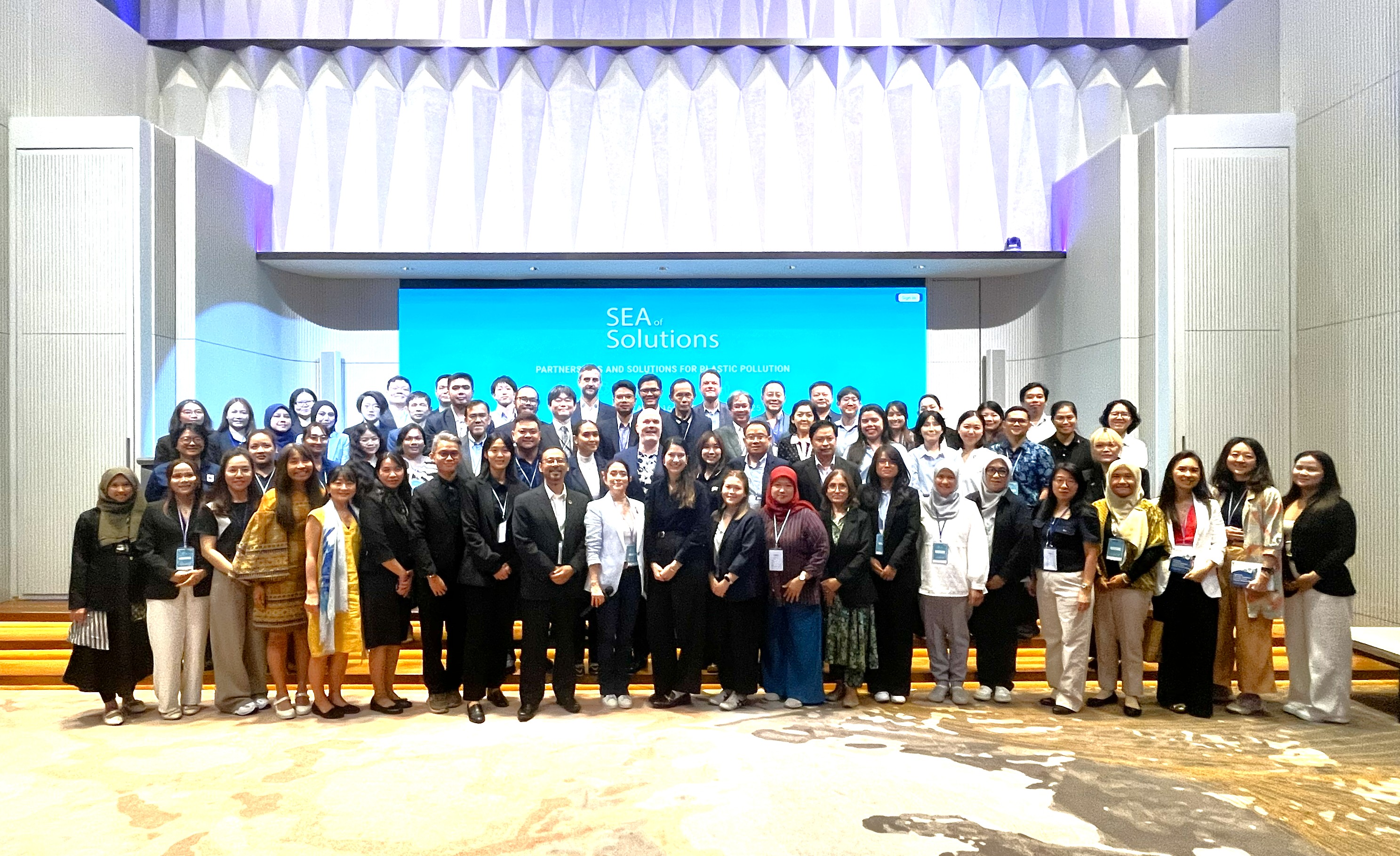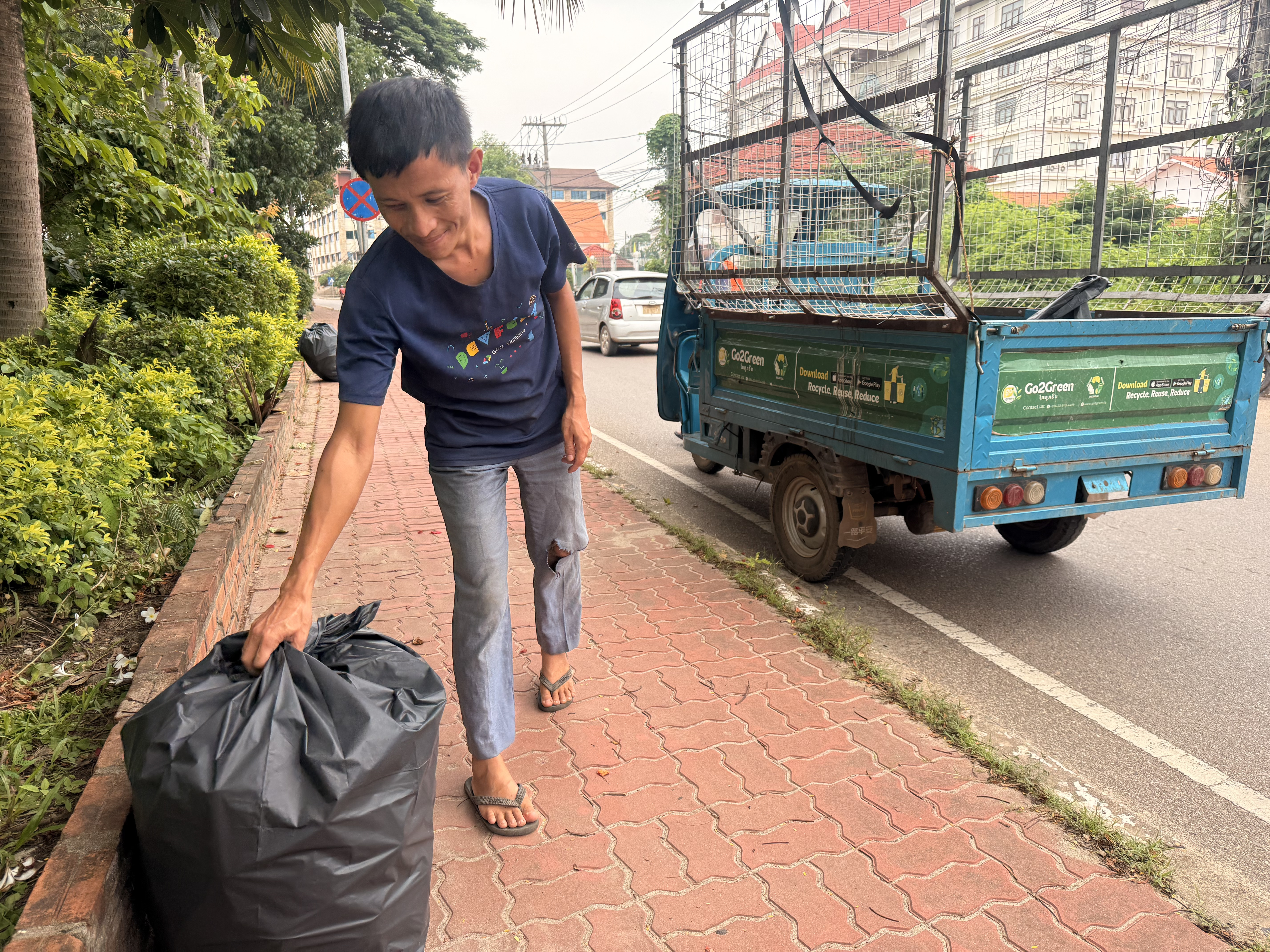

Denpasar, 23 May 2023: There has been much praise for the benefits the G20 Bali Summit in November 2022 brought to the island's economy, boosting a tourism industry hit hard by the COVID-19 pandemic. The impact also trickled down to the waste management sector, speeding up the process of establishing a much-needed integrated waste management facility (Tempat Pengolahan Sampah Terpadu, TPST).
The 2-hectare facility, located in the Kesiman Kertalangu ward of the capital Denpasar, was funded by The World Bank, and is managed under a 20-year contract by private enterprise PT Bali Citra Metro Plasma Power (BCMPP).
'Thanks to the G20, it took only three months to complete the process [of establishing the TPST]. The facility was completed in February 2023, and we were commercially running in March,’ said Mr Made Wahyu Wiratma, BCMPP CEO, during a discussion with the Regional Knowledge Centre for Marine Plastic Debris (the Centre) in Sanur, Bali.
The facility has a set-up capacity of 450 tons per day, although it is currently running at 60% capacity of 270 tons per day. Expected to reach full capacity in June 2023, the facility is run by 77 employees working in two shifts, 32 of whom work at the manual sorting tables.
From Waste to Energy
TPST Kesiman Kertalangu only receives dry waste, which has been separated from the wet waste at the landfill. The incoming waste flow is as follows:
● Receiving area for waste coming from the city
● Bag opener
● Manual sorting
● Box feeder, where waste is separated by weight
● Shredder
● Rotary dryer to reduce the moisture level from 40% to 20%
● Compressor to make refuse derived fuel (RDF) bales and machines to produce pellets.
Around 10% of the incoming waste is plastic, which will be compressed and sold to offtakers, according to Mr Victor Benedictus, TPST Plant Head, while around 45% of the dried waste is processed into briquettes or RDF and sold to power plants and the cement industry.
‘RDF has the same calorific value as coal, but the price is slightly cheaper. The RDF still contains plastic to make it more burnable,’ he said, adding that the rest of the waste is recycled.
Two more facilities will open in the city in the near future: TPST Padangsambian Kaja, with a capacity of 120 tons per day; and TPST Tahura Ngurah Rai (450 tons per day).
‘One particular site will be reserved for wet waste, such as fruit and vegetable waste that will be used as maggot feed and compost,’ he said.
Also read: From Waste-to-Energy: How Kyoto City Manages Its Trash
Major Operational Challenges
The company received hundreds of complaints about the foul smelling waste when the facility first began operations, said Mr Wiratma. It is located on the side of the main road not too far from residential complexes, causing residents to suffer unwanted odours from the facility.
This backlash was partly due to a lack of communication in advance with the surrounding community about the purpose of the facility. Many neighbours believed the structure was going to be a garment factory, only to much later discover it was destined to be a waste management site.
The problem has been resolved but the facility faces more challenges – rain in particular. As a tropical island, the rain makes it more complicated and time consuming to separate and process the waste.
‘Another challenge is recruiting workers. A lot of Balinese would love to work on cruise ships and in the hospitality industry. But because of the negative connotations attached to the word waste, they back off when we try to recruit them to the waste management facility,’ said Mr Wiratma.
This leads to a high rate of employee turnover, as it is hard to retain workers longer term, which is understandable given the social stigma.
‘Financial viability is another issue for us. This project is financed by a foreign bank, not a grant, so we have to be committed. It is still a big homework for us to meet the production capacity, otherwise we cannot pay off the loan,’ he said.
Despite the number of challenges it faces, the facility has become an example for other provinces in Indonesia, with the central government planning more facilities along the same lines.
‘I have been invited to a lot of meetings to speak and explain about the facilities and send a report every week. This facility has become the national reference to be duplicated in 52 cities in Indonesia,’ he said.
Denpasar, 23 May 2023: There has been much praise for the benefits the G20 Bali Summit in November 2022 brought to the island's economy, boosting a tourism industry hit hard by the COVID-19 pandemic. The impact also trickled down to the waste management sector, speeding up the process of establishing a much-needed integrated waste management facility (Tempat Pengolahan Sampah Terpadu, TPST).
The 2-hectare facility, located in the Kesiman Kertalangu ward of the capital Denpasar, was funded by The World Bank, and is managed under a 20-year contract by private enterprise PT Bali Citra Metro Plasma Power (BCMPP).
'Thanks to the G20, it took only three months to complete the process [of establishing the TPST]. The facility was completed in February 2023, and we were commercially running in March,’ said Mr Made Wahyu Wiratma, BCMPP CEO, during a discussion with the Regional Knowledge Centre for Marine Plastic Debris (the Centre) in Sanur, Bali.
The facility has a set-up capacity of 450 tons per day, although it is currently running at 60% capacity of 270 tons per day. Expected to reach full capacity in June 2023, the facility is run by 77 employees working in two shifts, 32 of whom work at the manual sorting tables.
From Waste to Energy
TPST Kesiman Kertalangu only receives dry waste, which has been separated from the wet waste at the landfill. The incoming waste flow is as follows:
● Receiving area for waste coming from the city
● Bag opener
● Manual sorting
● Box feeder, where waste is separated by weight
● Shredder
● Rotary dryer to reduce the moisture level from 40% to 20%
● Compressor to make refuse derived fuel (RDF) bales and machines to produce pellets.
Around 10% of the incoming waste is plastic, which will be compressed and sold to offtakers, according to Mr Victor Benedictus, TPST Plant Head, while around 45% of the dried waste is processed into briquettes or RDF and sold to power plants and the cement industry.
‘RDF has the same calorific value as coal, but the price is slightly cheaper. The RDF still contains plastic to make it more burnable,’ he said, adding that the rest of the waste is recycled.
Two more facilities will open in the city in the near future: TPST Padangsambian Kaja, with a capacity of 120 tons per day; and TPST Tahura Ngurah Rai (450 tons per day).
‘One particular site will be reserved for wet waste, such as fruit and vegetable waste that will be used as maggot feed and compost,’ he said.
Also read: From Waste-to-Energy: How Kyoto City Manages Its Trash
Major Operational Challenges
The company received hundreds of complaints about the foul smelling waste when the facility first began operations, said Mr Wiratma. It is located on the side of the main road not too far from residential complexes, causing residents to suffer unwanted odours from the facility.
This backlash was partly due to a lack of communication in advance with the surrounding community about the purpose of the facility. Many neighbours believed the structure was going to be a garment factory, only to much later discover it was destined to be a waste management site.
The problem has been resolved but the facility faces more challenges – rain in particular. As a tropical island, the rain makes it more complicated and time consuming to separate and process the waste.
‘Another challenge is recruiting workers. A lot of Balinese would love to work on cruise ships and in the hospitality industry. But because of the negative connotations attached to the word waste, they back off when we try to recruit them to the waste management facility,’ said Mr Wiratma.
This leads to a high rate of employee turnover, as it is hard to retain workers longer term, which is understandable given the social stigma.
‘Financial viability is another issue for us. This project is financed by a foreign bank, not a grant, so we have to be committed. It is still a big homework for us to meet the production capacity, otherwise we cannot pay off the loan,’ he said.
Despite the number of challenges it faces, the facility has become an example for other provinces in Indonesia, with the central government planning more facilities along the same lines.
‘I have been invited to a lot of meetings to speak and explain about the facilities and send a report every week. This facility has become the national reference to be duplicated in 52 cities in Indonesia,’ he said.

Communications Expert



